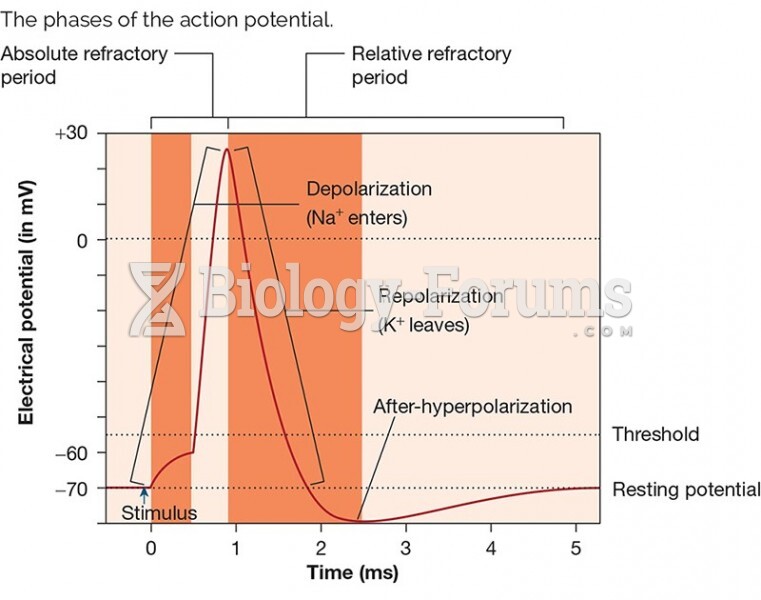Answer to Question 1
Correct Answer: 3
Rationale 1: The urinary concentration of a drug will not provide an accurate measurement of nephrotoxicity.
Rationale 2: The route of administration will not determine nephrotoxicity.
Rationale 3: Plasma levels of a drug are an indicator of whether a drug is at a therapeutic or toxic level, and provide information as to whether a drug dosage needs adjustment.
Rationale 4: Although the rate at which a drug is administered intravenously can affect plasma levels and irritation to the vein, it would not provide the best measure of nephrotoxicity.
Global Rationale: Plasma levels of a drug are an indicator of whether a drug is at a therapeutic or toxic level, and provide information as to whether a drug dosage needs adjustment. The urinary concentration of a drug will not provide an accurate measurement of nephrotoxicity. The route of administration will not determine nephrotoxicity. Although the rate at which a drug is administered intravenously can affect plasma levels and irritation to the vein, it would not provide the best measure of nephrotoxicity.
Answer to Question 2
Correct Answer: 3
Rationale 1: A half-life of 10 to 20 hours is longer than would be needed to provide migraine pain relief.
Rationale 2: A half-life of 5 to 10 days is longer than would be needed to provide migraine pain relief.
Rationale 3: A drug with a half-life of 2 to 3 hours will be reduced by 50 in 2 to 3 hours, providing adequate time for the client to obtain pain relief.
Rationale 4: A drug with a half-life of 1 to 3 minutes would be eliminated in a very short time period and would not provide adequate pain relief.
Global Rationale: A drug with a half-life of 2 to 3 hours will be reduced by 50 in 2 to 3 hours, providing adequate time for the client to obtain pain relief. A half-life of 10 to 20 hours is longer than would be needed to provide migraine pain relief. A half-life of 5 to 10 days is longer than would be needed to provide migraine pain relief. A drug with a half-life of 1 to 3 minutes would be eliminated in a very short time period and would not provide adequate pain relief.







